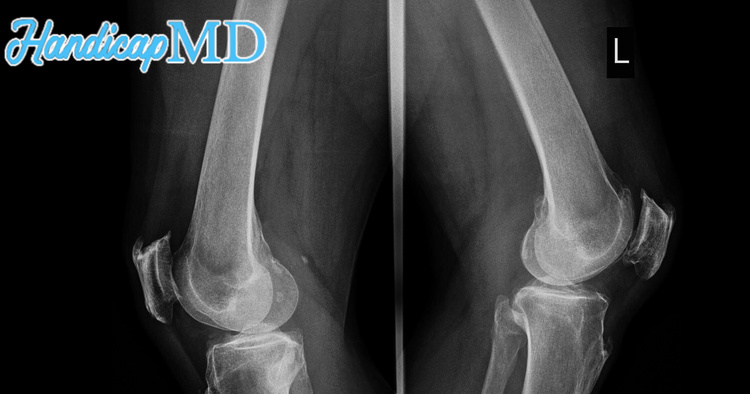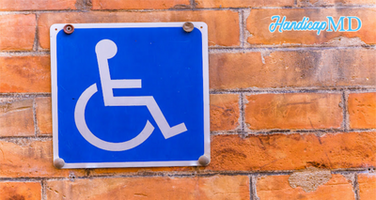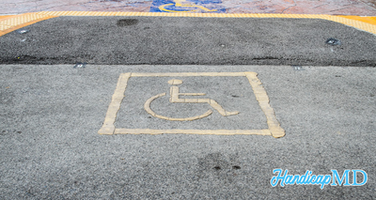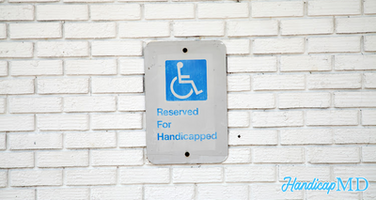
Osteoarthritis: Qualifying Conditions for a DMV Handicap Parking Permit
Introduction
Osteoarthritis is a common degenerative joint disease that affects millions of people worldwide. It causes pain, stiffness, and swelling in the joints, making it difficult for individuals to perform everyday activities. For those who suffer from severe OA, obtaining a DMV handicap parking permit can be a valuable resource. This permit allows individuals with qualifying conditions to park in designated accessible parking spaces closer to their destinations. In this article, we will explore the qualifying conditions for a DMV handicap parking permit for individuals with osteoarthritis.
Osteoarthritis: Understanding the Condition
Before diving into the qualifying conditions for a DMV handicap parking permit, let's first understand osteoarthritis. OA is a chronic condition that primarily affects the joints. It occurs when the protective cartilage that cushions the ends of the bones wears down over time, leading to friction, pain, and limited mobility. OA commonly affects the hands, knees, hips, and spine, causing discomfort and difficulty in performing daily tasks.
Osteoarthritis: What Is It?
Osteoarthritis, often referred to as OA, is a chronic condition that primarily affects the joints. It occurs when the cartilage, a smooth and protective tissue that cushions the ends of bones, gradually wears away. As a result, the bones may rub against each other, causing pain, inflammation, and structural changes in the joint.
Causes of Osteoarthritis
Several factors contribute to the development of OA. The primary causes include:
- Age: The risk of OA increases with age, as the cartilage becomes less resilient over time.
- Obesity: Excess weight places additional stress on the joints, particularly in the knees and hips.
- Joint Injury: Previous joint injuries, such as fractures or ligament tears, can increase the likelihood of developing OA later in life.
- Genetics: Some individuals may inherit genes that make them more susceptible to OA.
- Occupational Hazards: Occupations involving repetitive joint movements or heavy lifting may contribute to joint damage and the development of OA.
Symptoms of OA
OA manifests differently in individuals, but common symptoms include:
- Joint Pain: Persistent pain in the affected joint, which may worsen with activity or overuse.
- Stiffness: Stiffness in the joints, particularly in the morning or after periods of inactivity.
- Limited Range of Motion: Difficulty moving the affected joint fully.
- Joint Swelling: Swelling and tenderness around the joint.
- Cracking or Grating Sensation: A popping or crackling sound when moving the joint.
- Joint Instability: The joint may feel loose or give way.
Diagnosis of Osteoarthritis
To diagnose OA, healthcare professionals employ a combination of methods, including:
- Medical History: The doctor will inquire about symptoms, previous injuries, and family history of OA.
- Physical Examination: A thorough examination of the affected joint, assessing its range of motion, tenderness, and swelling.
- Imaging Tests: X-rays, magnetic resonance imaging (MRI), or computed tomography (CT) scans can provide detailed images of the joint, helping to evaluate the extent of damage.
- Joint Fluid Analysis: In some cases, a sample of joint fluid may be extracted and analyzed for signs of inflammation or other conditions.
Treatment Options for Osteoarthritis
While there is no cure for OA, several treatment options can help manage symptoms and improve joint function. The most common approaches include:
- Medications: Over-the-counter pain relievers, such as acetaminophen or nonsteroidal anti-inflammatory drugs (NSAIDs), can help alleviate pain and reduce inflammation. In severe cases, corticosteroid injections may be administered.
- Physical Therapy: A tailored exercise program, including stretching and strengthening exercises, can improve joint flexibility, muscle strength, and overall mobility.
- Weight Management: Maintaining a healthy weight reduces stress on the joints and can slow down the progression of OA.
- Assistive Devices: The use of assistive devices, such as braces, orthotics, or canes, can provide support to the affected joints and improve stability.
- Surgery: In advanced cases where conservative measures fail, surgical interventions like joint replacement or joint fusion may be considered.
Prevention of OA
Although OAcannot always be prevented, certain lifestyle modifications can reduce the risk or delay its onset:
- Regular Exercise: Engaging in low-impact exercises, such as swimming or cycling, can strengthen muscles and support joint health.
- Maintain a Healthy Weight: Excess weight puts strain on the joints, so maintaining a healthy weight can reduce the risk of developing OA.
- Protect Your Joints: When participating in physical activities or sports, use proper protective gear and techniques to minimize the risk of joint injuries.
- Avoid Repetitive Movements: If your occupation involves repetitive joint movements, take regular breaks and incorporate stretching exercises into your routine.
- Use Joint-Friendly Techniques: When lifting heavy objects, use your larger joints or ask for assistance to avoid straining smaller joints like the fingers.
Osteoarthritis: Qualifying Conditions for a DMV Handicap Parking Permit
Obtaining a DMV handicap parking permit for OA requires meeting specific qualifying conditions. These conditions are designed to ensure that individuals with severe osteoarthritis receive the necessary accommodations. The following are the qualifying conditions for a DMV handicap parking permit:
1. Chronic Pain and Stiffness (?)
Individuals with OA experience chronic pain and stiffness in their affected joints. This pain can be debilitating and make it challenging to walk long distances. If you find that your OA pain and stiffness significantly impact your mobility, you may qualify for a DMV handicap parking permit.
2. Limited Range of Motion (?)
OA often limits the range of motion in the affected joints. If your condition restricts your ability to bend, twist, or move certain joints, it can be challenging to navigate crowded parking lots or access vehicles parked in standard parking spaces. In such cases, a DMV handicap parking permit can provide the necessary convenience and accessibility.
3. Use of Assistive Devices (?)
Many individuals with OA rely on assistive devices such as canes, walkers, or wheelchairs to aid their mobility. These devices can be cumbersome to transport, making it essential to have easy access to parking spaces that accommodate them. If you require the use of assistive devices due to osteoarthritis, you may be eligible for a DMV handicap parking permit.
4. Severe Joint Deformity (?)
In advanced stages of osteoarthritis, joint deformity can occur. Severe joint deformities can affect an individual's balance and stability, making it unsafe to traverse long distances. If your osteoarthritis has resulted in significant joint deformity, you may qualify for a DMV handicap parking permit to ensure your safety and well-being.
5. Medical Documentation (?)
To obtain a DMV handicap parking permit for OA, you will typically need to provide medical documentation. This documentation should include a diagnosis of OA from a qualified healthcare professional, along with any relevant medical records and imaging reports. It is crucial to consult with your healthcare provider to gather the necessary documentation for your permit application.
FAQs (Frequently Asked Questions)
Q: How can I apply for a DMV handicap parking permit for OA?
A: To apply for a DMV handicap parking permit for OA, you will need to contact your local Department of Motor Vehicles (DMV) or relevant transportation authority. They will provide you with the necessary application forms and guide you through the process. Remember to gather all required medical documentation to support your application.
Q: Are there any fees associated with obtaining a DMV handicap parking permit for OA?
A: The fees for obtaining a DMV handicap parking permit vary depending on your location. Some jurisdictions may have nominal fees or waive them for individuals with qualifying conditions such as OA. Contact your local DMV for specific fee information and any available discounts.
Q: How long is a DMV handicap parking permit valid for OA?
A: The validity period of a DMV handicap parking permit for OA also varies by jurisdiction. Generally, these permits are issued for a specific duration, such as one to three years, and require periodic renewal. Check with your local DMV for the exact validity period and renewal process in your area.
Q: Can I use my DMV handicap parking permit in other states?
A: DMV handicap parking permits are typically recognized across state lines. However, it is essential to familiarize yourself with the specific parking regulations and requirements of each state you visit. Some states may have additional rules or restrictions that differ from your home state.
Q: What are the benefits of having a DMV handicap parking permit for osteoarthritis?
A: Having a DMV handicap parking permit for OA offers several benefits. It provides closer and more accessible parking spaces, reducing the need to walk long distances or navigate through crowded parking lots. This convenience can significantly alleviate pain and discomfort associated with osteoarthritis, allowing for a better overall mobility experience.
Q: Can I use a DMV handicap parking permit if I am not the one with osteoarthritis?
A: DMV handicap parking permits are issued to individuals who have qualifying conditions that significantly affect their mobility, including OA. The permit is intended to assist the person with the condition and should not be used by others unless they are transporting the permit holder.
Q. What are the risk factors for developing osteoarthritis?
Several risk factors increase the likelihood of developing osteoarthritis, including age, obesity, previous joint injuries, genetics, and certain occupations.
Q. Can osteoarthritis be reversed?
While OA cannot be reversed, appropriate treatment and lifestyle modifications can help manage symptoms, improve joint function, and slow down the progression of the disease.
Q. Is osteoarthritis only seen in older adults?
While OA is more common among older adults, it can affect individuals of any age, especially those with a history of joint injuries or certain genetic predispositions.
Q. Are there any natural remedies for relieving osteoarthritis symptoms?
Some individuals find relief from OA symptoms through natural remedies such as hot or cold therapy, herbal supplements, or alternative therapies like acupuncture. However, it is important to consult with a healthcare professional before trying any new treatments.
Q. Can osteoarthritis lead to disability?
In severe cases, OA can significantly impact joint function and quality of life. However, with proper management and treatment, many individuals with osteoarthritis can continue to lead active and fulfilling lives.
Q. Is there ongoing research for finding a cure for osteoarthritis?
Yes, researchers and medical professionals are continuously studying OA to better understand its causes and develop new treatment options. While a cure has not been found yet, ongoing research offers hope for future advancements in managing and potentially preventing the disease.
Conclusion
For individuals living with OA, a DMV handicap parking permit can be a valuable resource. It provides convenient and accessible parking options that accommodate the challenges posed by the condition. By meeting the qualifying conditions and following the appropriate application process, individuals with OA can enhance their mobility and improve their overall quality of life.
Remember to consult your local DMV or transportation authority for specific guidelines and requirements related to obtaining a DMV handicap parking permit for osteoarthritis. By taking advantage of this resource, you can navigate parking areas with greater ease and make daily activities more manageable.
.png)





